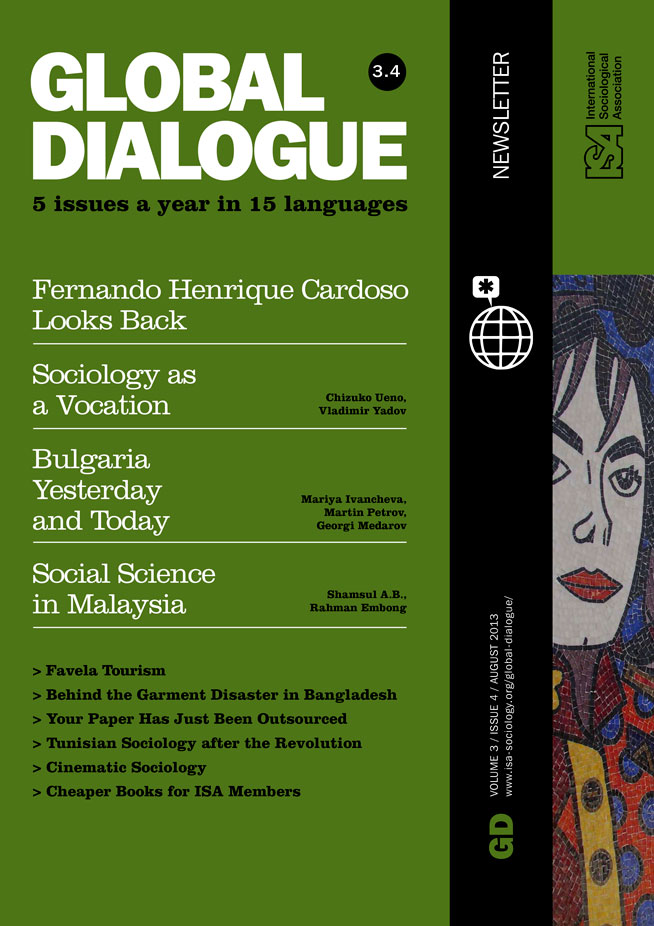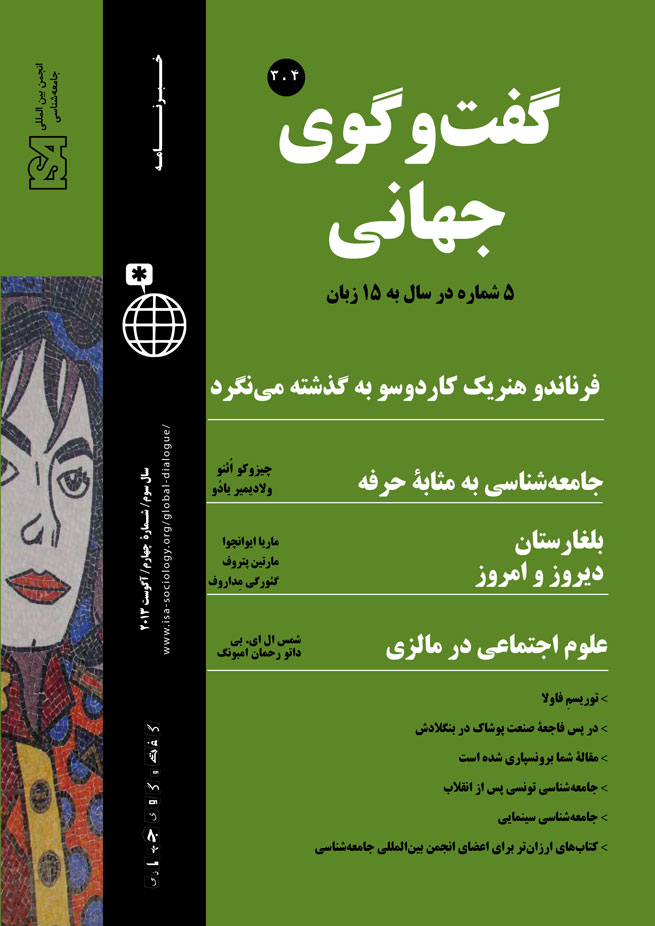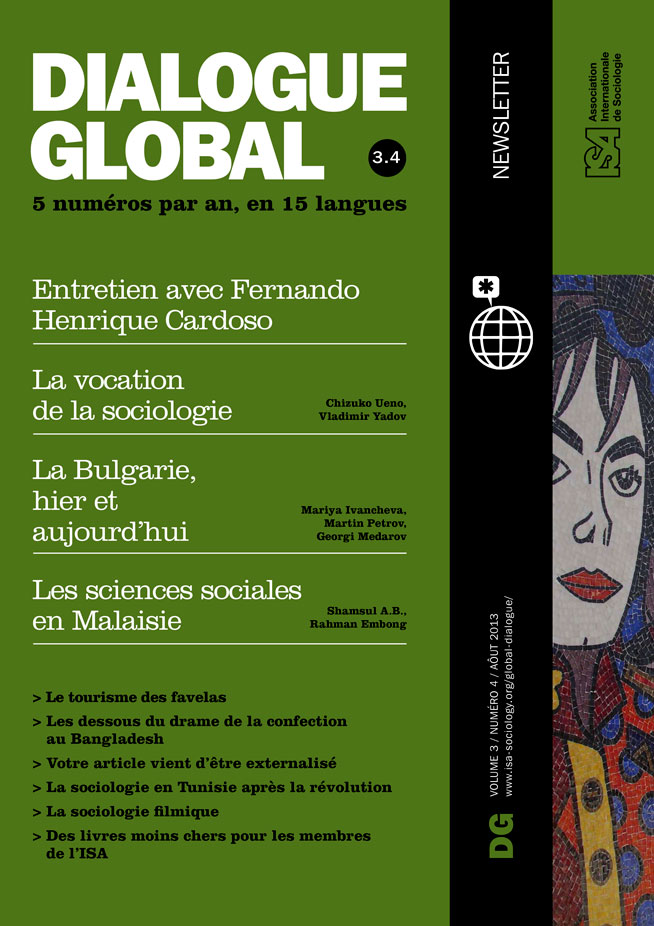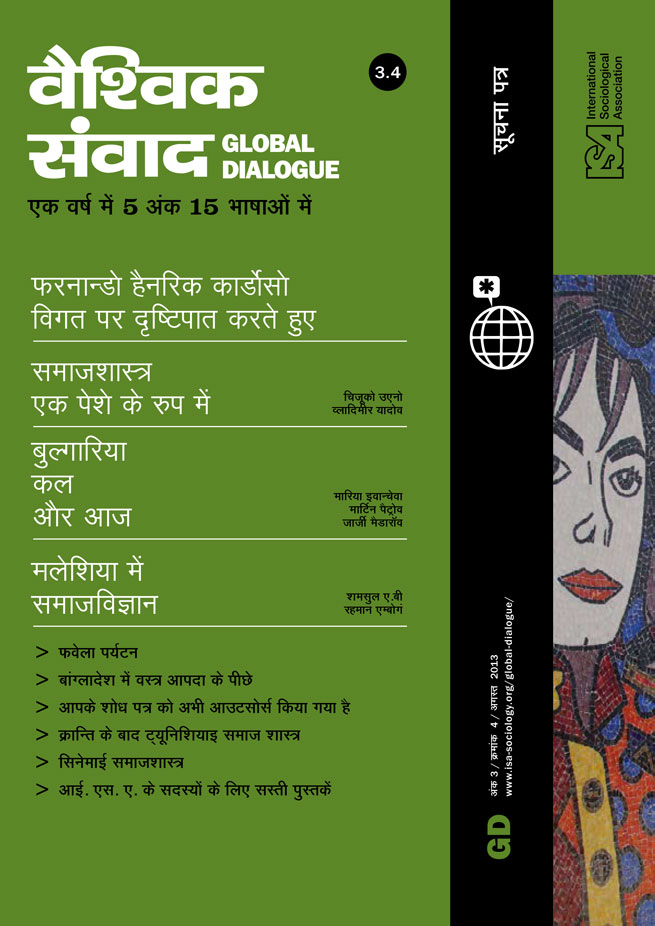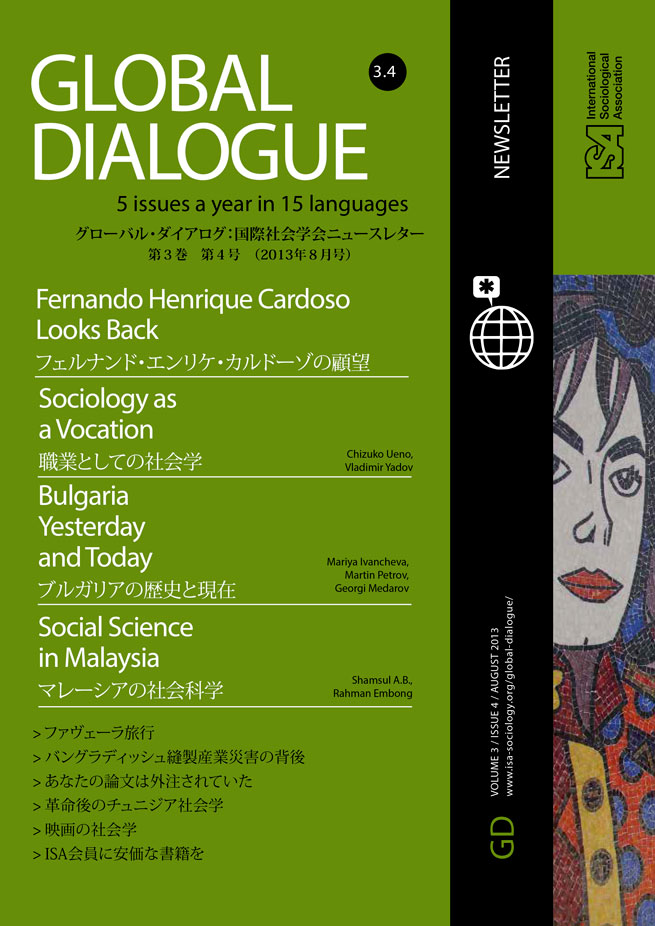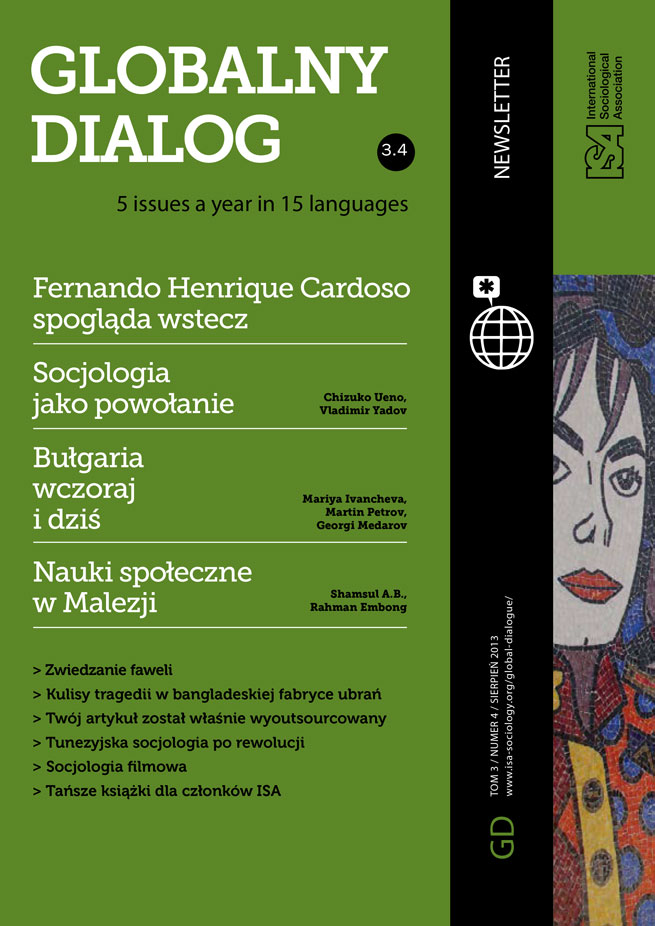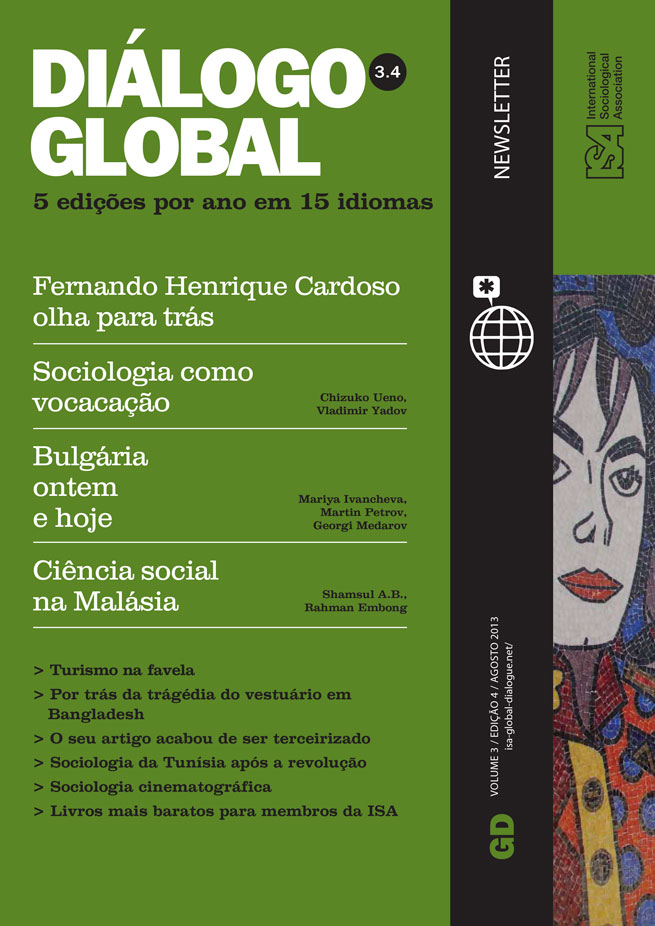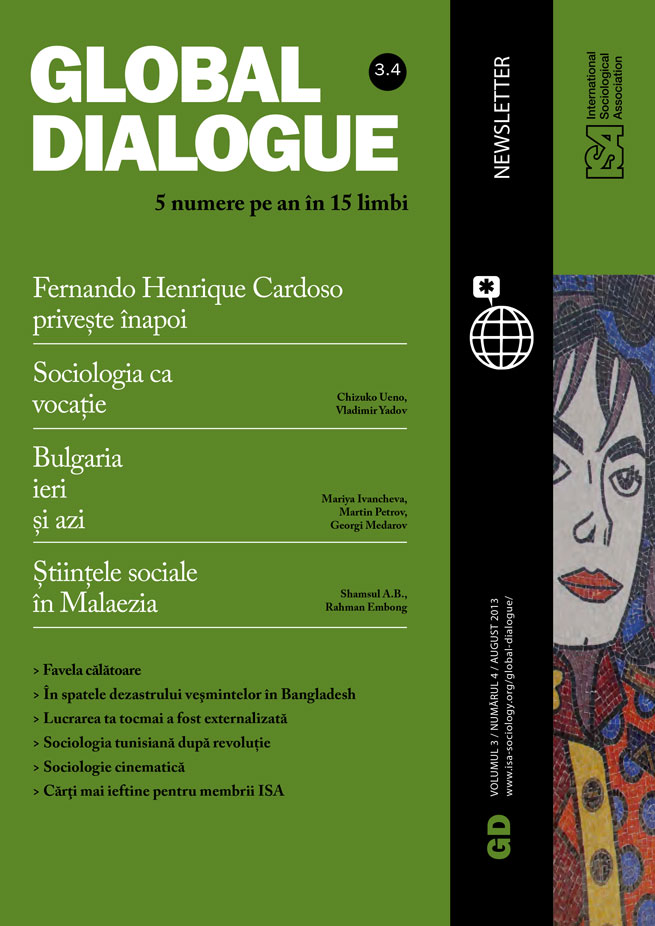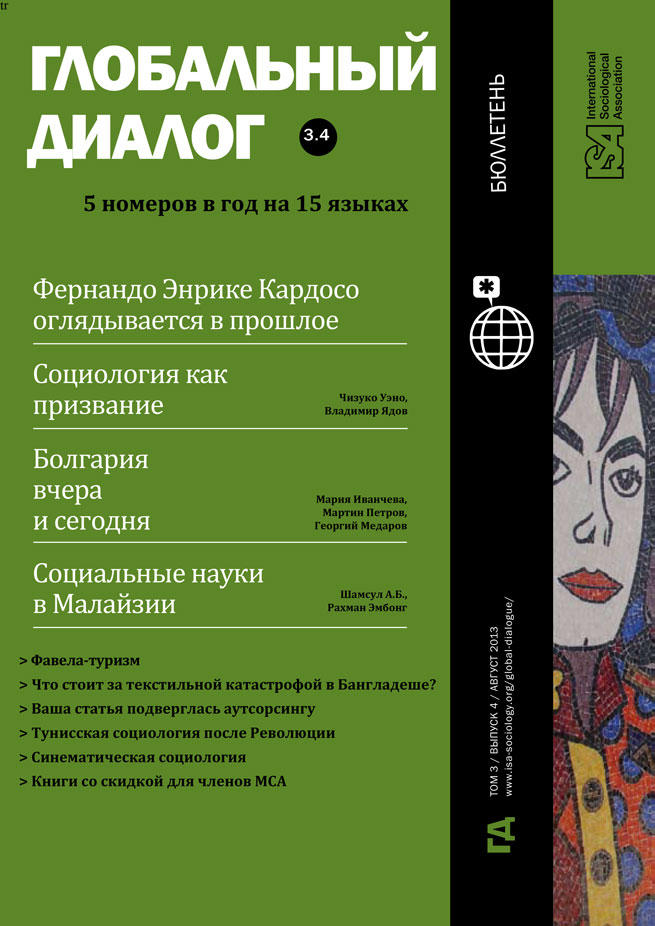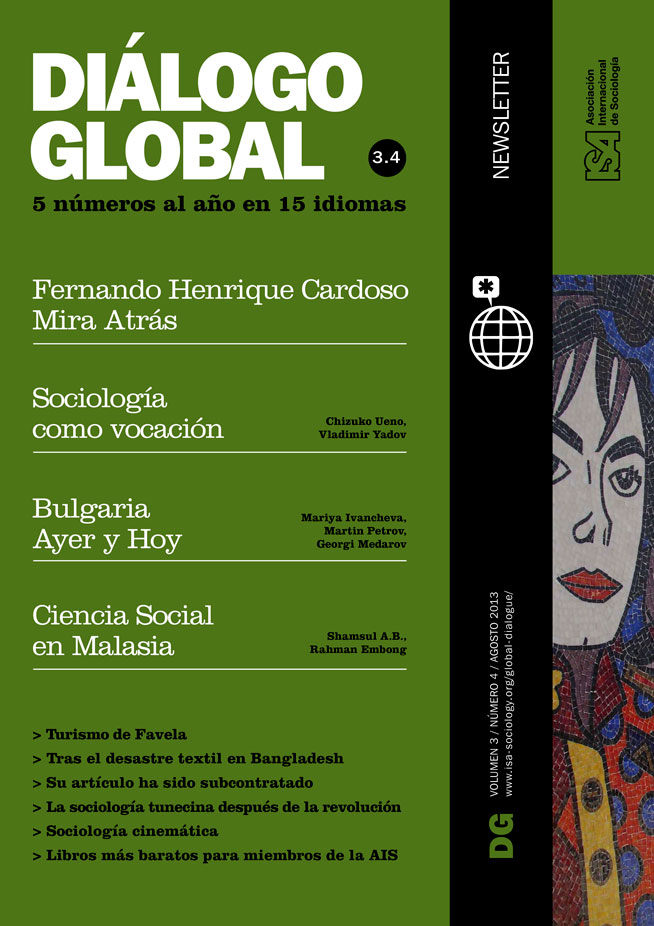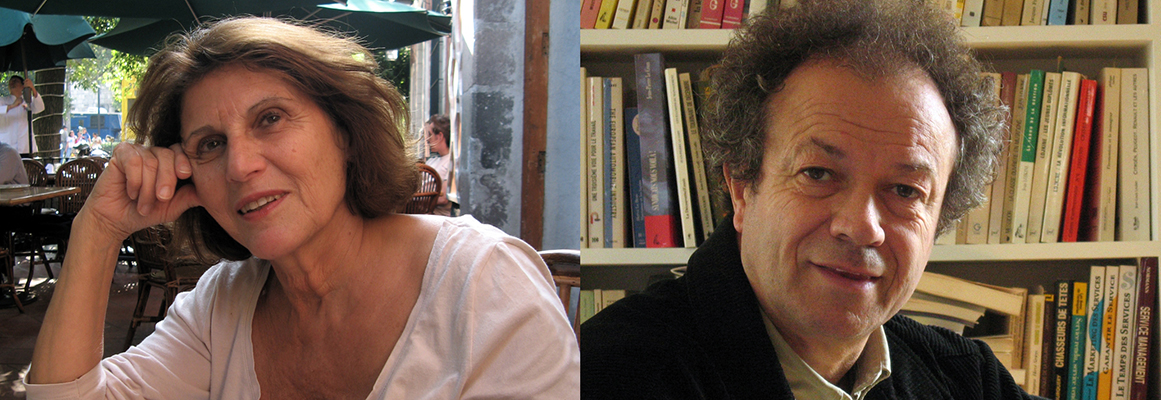Read more about Sociology Live

Tunisian Sociology after the Revolution
by Mounir Saidani
August 16, 2013
Joyce Sebag and Jean-Pierre Durand are a husband-and-wife team of cinematic sociologists at the University of Evry’s Center Pierre Naville, just outside Paris. After having devoted two rich decades to the sociology of work, in 1995 Sebag and Durand’s lifelong fascination with the image led them to launch the Master’s program Image and Society. Their MAs and PhDs gain a unique combination of cinematic training rooted in social science expertise, with degrees awarded contingent upon the production of a sociological film. During this time Sebag and Durand also produced three documentaries, Dreams on the Line about new conditions of work in a California car factory, Nissan: a History of Management about the strategy of a multi-national firm, and 50 Years of Affirmative Action in Boston, about affirmative action in America. As a result of their efforts, the Association Française de Sociologie recently recognized cinematic sociology as an official field of study. They are interviewed by Jordanna Matlon, postdoctoral fellow at the Institute for Advanced Study in Toulouse.
JM: Why do you refer to what you do as cinematic, and not visual sociology?
JS: I think that visual sociology has existed for a long time, and it’s more an analysis of photography and film than a way to think with images. We want to try to find a way for sociology to enunciate things with photography and film.
JM: What would you consider the specific skills of a cinematic sociologist?
JS: When you study something you think you have accomplished something very rational and you have a great distance from it. You think that you are “outside” the object. And one reason for using media for support is that you show that you are always inside the research.
JM: And that’s an inevitable part of the method.
JS: Yes. Film is a way to say that science is not “outside” people. It is included “inside” the people being portrayed or studied. Your point of view is here. The documentary is a space of reflection. We do research to create this space for reflection, and as a way to debate with people who are not in the situation of being a sociologist, and, at the same time, to create something new. It is a meeting place. It is a way to enter into a multiplicity of points of view.
We see that these people in the film are the actors of the research. You can see they are. They think. They are not only objects.
JPD: I would like to say that if sociologists are appreciating the use of movies and video relatively late – late as compared to anthropologists – I think it’s because in sociology we began by studying people who are in the same place as ourselves, not in Africa, Indonesia, or so on. When sociologists speak about their own countries they make a choice concerning the topic of study, the slice of reality. Moreover, when you write, it’s very easy to make this choice. And what is most important for sociologists is not what we say, it’s what we omit – the residual. When you are making cinematic sociology it’s much more difficult to choose, to omit the residual things.
JM: Can you give me an example of a choice you’ve made or something from your experience?
JPD: For example, in [our documentary] Dreams on the Line we didn’t speak a lot about unions with the workers. Just a little. And some of them said very, very bad things about unions. Unions are for…
JS: Lazy people.
JPD: Lazy people. One said that. And a woman said, “I am a worker, I cannot strike.” If you are writing, you would leave it out because it’s maybe one second in a long interview. But in fact here we used that comment to show why and how people accept new conditions, such as Japanese rules of work. And the unions have to go along with their members, and so they keep silent.
JS: We saw people at work very hurried and tired, under a lot of pressure. But when we shot these people they seemed very calm and very relaxed. So we had to show how calm they seemed. But then in parallel we also interviewed them and everybody said, “It’s hard work, it’s such hard work.” But it is not a Charlie Chaplin movie. It all seems very quiet. So we juxtapose the interview to show that what you see, when you make a field observation, is sometimes not the reality of people’s feelings. And we called it Dreams on the Line because everybody dreams to escape this, escape the line.
So this movie is a way to start a conversation. It is a challenge to the simplification of reality, a simplification that does violence to reality.
JPD: As Joyce has said, it is a subjective sociology, but it is also a rational knowledge. We had our point of view. We assume our own subjectivity, but it’s much more difficult than writing a book or a paper. Because sure, we can make choices – we shoot or we edit and so on. Sure. But when you film, you cannot simply leave out inconvenient facts. It’s a big problem. I wrote maybe fifteen books, and I know how to show what is important and how to argue in a book. But with a film you cannot argue in the same way because the facts – social facts – are in front of you. Sometimes sociologists can be magicians, but you can’t be when you are doing cinematic sociology.
JM: How do you see your role in society as a cinematic sociologist?
JPD: I believe our role is to show what is hidden in social life. For that we may need to explain things rationally but to be heard and to attract the attention of people we have to work with we need to deal with emotions too. In writing I think it is more difficult to show the layers of our emotions, such as controlled emotions.
JS: For example, we conducted a powerful interview with a woman in our film about affirmative action in a deprived neighborhood of Boston. The way she responded demonstrated her dignity, her control. In this way she challenged those who would choose to use violence. I think it is important to show the dignity of people.
JM: Do you think that in cinematic sociology the specific use of the emotive for persuasion may leave it open to critique about manipulation? Or perhaps it provides another way to gain understanding?
JS: There is not just one way to understand something. Our understanding is not only rational. Understanding with feelings is understanding too. Indeed, you may be able to understand more. But, it is true, you can also be manipulative in writing a book and maybe even more easily.
But film also changes the relationship you have with people you meet in the field. I was on the line in a car plant near Paris, doing ethnographic research. A worker said to me, “you say you do research and we help you. But we are nothing after the research, we get nothing in return. It’s okay for your career.”
JM: Like exploitation.
JS: It’s like exploitation. But when you see people speaking in a film they exist. Maybe you explain to them, maybe it’s another kind of exploitation. But at least now we can say to them, “you exist.” You think. You speak. And the spectator can see their physical expressions and hear their tone of voice. And it’s very important to show that these people are not shadows, but real human beings.
And that they think. You hear their words and see their faces. We are not giving them a part, they take their own part in the film.
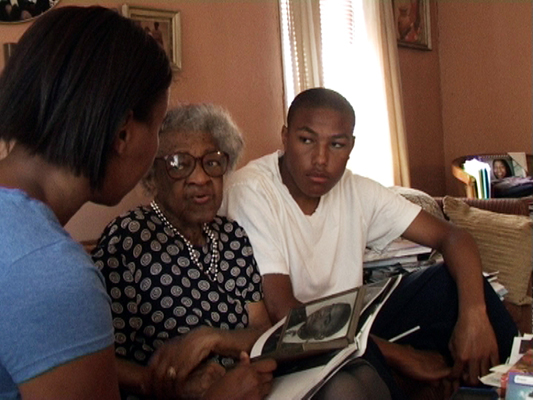
JM: What are the challenges you face as a cinematic sociologist?
JPD: Many people – the public, sociologists, and a lot of scientists – lack the capacity to read images, pictures. At school we learn to read and to write words, but we never learn to read pictures. There are some specialists of film: film analysts, photo analysts, photo critics, and so on. But there is a very big gap between these professionals and the public. It’s a problem because the public – and a lot of sociologists – cannot read an image. That is probably our biggest challenge as visual and cinematic sociologists.
JS: There needs to be training in the analysis of images, and to make film we must understand what it means to make an image.
JPD: In a picture you have the feel of the picture. But if you see the picture, you must also think about where the picture is taken and what is outside of the frame.
JS: When you show an image there is something outside of it.
JPD: Here is the frame, but you are most of the time outside the frame.
JS: For sociologists it is the same. You are looking for what you see and what you don’t see.
JPD: The context.
JS: The context. What is outside the field, what is hidden by the people who are in front of you.
JPD: And a lot of people just consider the facts of what is in the frame. But that way you cannot understand the links to the wider society, the “big picture.”
JM: You’ve spoken about the training necessary to understand images. I imagine it’s even more relevant when it comes to making good cinematic sociology. Can you tell us about how you began the Master’s program at the University of Evry?
JPD: The University of Evry opened in the early 90s as one of four universities on the outskirts of Paris. I was appointed as an industrial sociologist. We had a very clever president of the university who was in favor of innovation. Joyce went to him to discuss the possibilities of sociology of film and he said, “I have no money but if you can find money I’ll support you.”
JS: Jean-Pierre found it. He was working in the car industry conducting research, and management offered financial support for the university. They gave us money and we bought our first camera. Furthermore, to organize this training at the university, in the first year I said, “Okay, if you want to belong to and teach in this program you must follow all the training of your colleagues.” That is you must learn sound, screenwriting, directing, editing, everything, but also take courses in sociology, history, anthropology, and history of the documentary, image analysis. We all did this for a year. After that we asked the Ministry to recognize the training we had established and they did. So in 1997 we started the Master’s Image and Society. The program requires every student to make a movie for their thesis. They must do it on their own.
JPD: This Master’s was the only one that required a double competency: technique, cinema, writing and so on, but also social science.
JM: And when you said this is the only one with a double competency, is that in France? In the world?
JS: I don’t know about the world! In France now they’re trying to develop others. But maybe it was the first.
JPD: Now we have twenty Master’s students per year and seven PhDs.
JM: Since you’ve trained mostly professionals at this point, do you feel that as academics that is a loss, that you’re not carrying your tradition of cinematic sociology? Or do you think that these practitioners also consider themselves cinematic sociologists?
JPD: It depends on them. Some are very invested in social or political life. Indeed, some students come to this Master’s as activists. We show them activism is not enough to make a good documentary, because when you are an activist you have one point of view, and you don’t want to see other things. For that, we need maybe six months to show them they must change their mind, to adopt a larger view. These kinds of people, once they understand that, they can be very good filmmakers because they have a social commitment inside of them.
JM: So as regards your PhD students, do you think that they will be interested in teaching?
JPD: Some of them would like to be documentarians, but at a higher level. And others would like to be teachers, yes, academics. But they understand it’s very difficult because sociologists in general have first to recognize cinematic sociology as a field in its own right and we have a long way to go. We are working toward that. There are maybe only three or even four universities that are open to cinematic sociology. There are not a lot of positions, and that’s one of our problems. We are at the beginning of the process.
Jordanna Matlon, The Institute for Advanced Study in Toulouse, France
Joyce Sebag and Jean-Pierre Durand, University of Evry, France
This issue is not available yet in this language.
Request to be notified when the issue is available in your language.
If you prefer, you can access previous issues available in your language:

